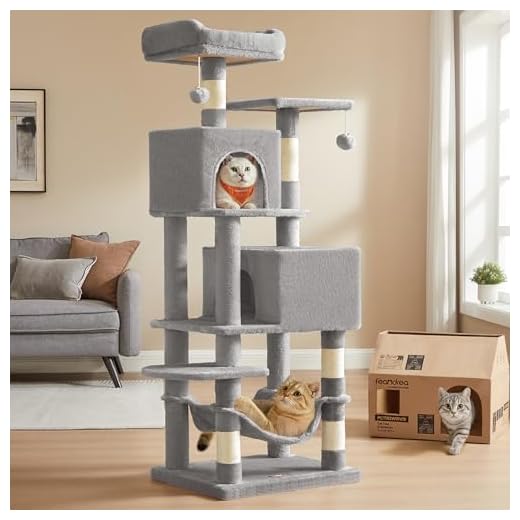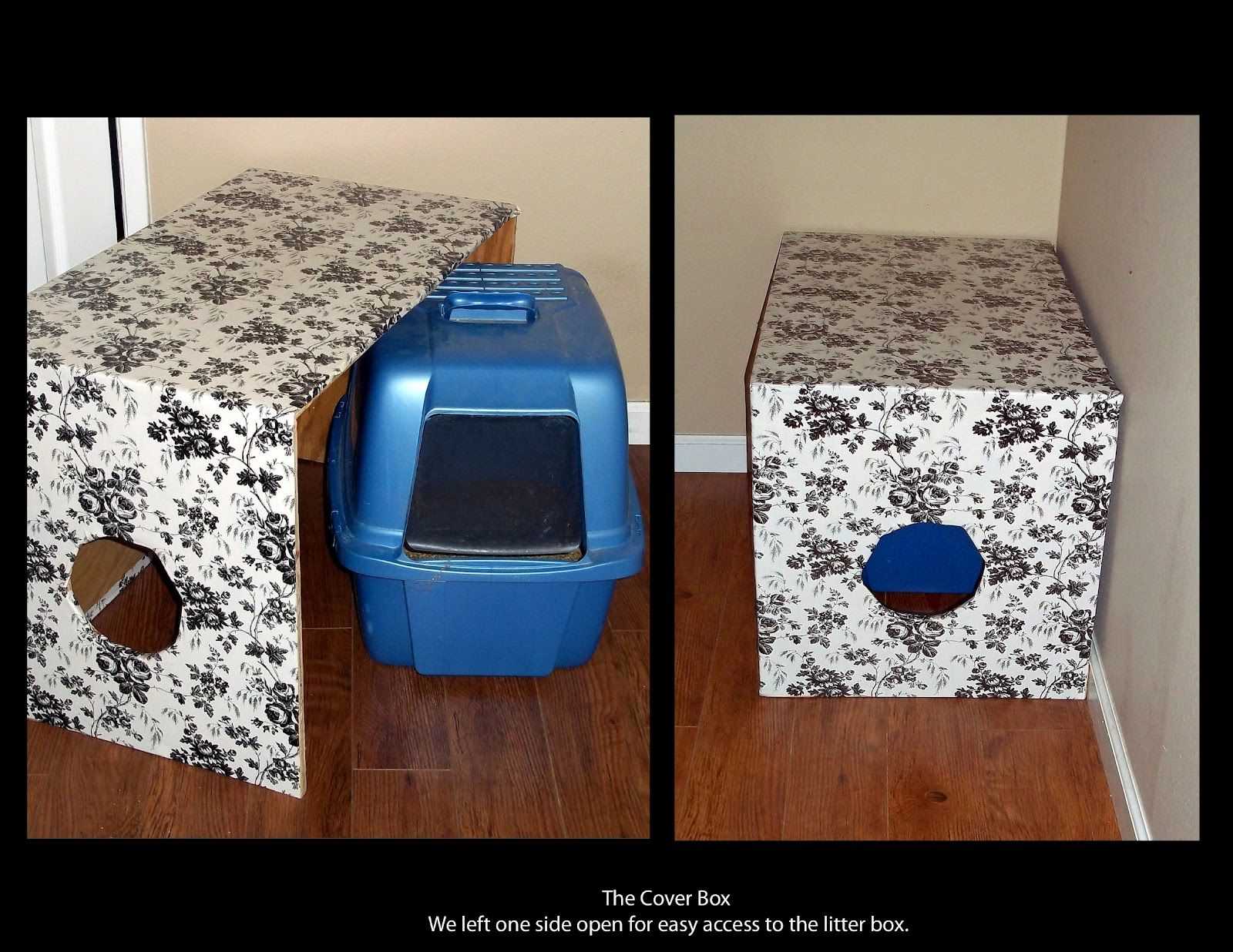



First, create separate spaces for each feline companion. This gives everyone their own territory, reducing stress and potential confrontations. Use baby gates or closed doors to help maintain distance while allowing them to see one another without direct interaction.
Next, focus on positive reinforcement. Reward calm behavior with treats or affection. This encourages peaceful interactions and helps build a sense of safety. Use clicker training to reinforce good behavior when they are relaxed in each other’s presence.
Consider environmental enrichment. Provide plenty of toys, scratching posts, and climbing structures to keep them occupied. A busy kitty is less likely to engage in unwanted behavior. Rotate toys regularly to maintain interest and stimulation.
Monitor body language closely. If one seems agitated or defensive, intervene gently before a situation escalates. Redirect their attention with a toy or engage them in a play session. Understanding their signals can prevent conflicts before they begin.
Lastly, consult a veterinarian if aggressive behavior persists. There may be underlying health issues or stressors that need to be addressed. A professional can offer tailored advice for your unique living situation.
Identifying Triggers for Aggressive Behavior
Observing the environment is crucial. Pay attention to specific situations that lead to hostility. I found that sudden movements or loud noises can provoke reactions. If my companion is startled, it’s often the catalyst for a skirmish.
Body Language Signals
Watch for changes in posture and tail position. When my friend’s ears flatten or tail swishes rapidly, it’s a clear sign of agitation. Recognizing these indicators helps in avoiding confrontations. If I see these signs, I know to keep my distance.
Resource Competition
Conflict often arises from competition for resources such as food, toys, or resting spots. I’ve noticed that providing multiple feeding stations and separate play areas reduces tension. Ensuring personal space during meal times has also proven effective in maintaining peace.
Creating Safe Spaces for Each Feline
Establish distinct areas for each of us. Designate separate rooms or corners where we can retreat and feel secure. Use furniture, like cat trees or shelves, to create vertical spaces. This allows us to escape and observe from a height, minimizing confrontations.
Provide cozy bedding and hiding spots. Boxes or tunnels can serve as hideaways, giving us a sense of ownership over our territory. Ensure these spots are equipped with our favorite toys to encourage exploration and play.
Utilize barriers, like baby gates, to separate territories when necessary. This helps maintain peace while still allowing us to see and smell one another, easing any tensions.
Rotate toys and bedding to keep environments stimulating. This prevents boredom and reduces the likelihood of aggressive encounters. Fresh scents and textures can make a significant difference in our behavior.
Maintain separate feeding zones. Each of us should have our own bowls in distinct locations to avoid competition during mealtime. This simple adjustment can alleviate stress and potential conflicts.
Regularly assess each space to ensure it meets our needs. If one of us seems stressed or anxious, consider altering the environment to provide more comfort and safety. A little change can lead to a more harmonious household.
Implementing Positive Reinforcement Techniques
To encourage peaceful interactions, focus on rewarding calm behavior. Use treats or praise when both of us are in the same space without conflict. This reinforces the idea that being together can lead to positive outcomes.
Creating a Reward System
Establish a consistent reward system. Each time I show desirable behavior, such as playing gently or resting near my sibling, I receive a treat or verbal praise. This helps associate good actions with positive experiences.
| Behavior | Reward |
|---|---|
| Calmly resting together | Treat or praise |
| Gentle play | Extra petting |
| Using a scratching post instead of each other | Favorite toy |
Timing is Key
Rewards should be given immediately after the desired behavior occurs. This helps connect the action with the reward in my mind, reinforcing the positive behavior effectively.
Additionally, maintaining a calm environment during training sessions is essential. Reducing noise and distractions allows me to focus better and learn quickly.
Using Distraction Methods During Conflicts
During tense moments, quick distractions can defuse the situation effectively. Use noise-making toys, like crinkly balls or jingling bells, to draw attention away from the conflict. When I see my housemate getting riled up, a sudden noise often shifts focus. Keep a stash of these toys handy for immediate access.
Food is another powerful tool. I’ve noticed that tasty treats, such as freeze-dried chicken or salmon, can redirect attention. When my friend starts to get aggressive, tossing a few treats in the opposite direction creates a diversion. This method not only calms the mood but also reinforces positive behavior through rewards.
Engaging them in play can also serve as a valuable distraction. Interactive toys, like feather wands or laser pointers, capture their interest and channel their energy into something constructive. It’s a great way to create a more harmonious atmosphere.
Another effective technique is to use scent. Cats are highly sensitive to aromas. Sprinkling a bit of catnip in a different area can draw them away from each other. Just make sure that you have a cozy spot ready with the best bedding for feral cats to encourage relaxation afterward.
Lastly, maintaining a calm demeanor is crucial. Your own energy can influence their reactions. Stay relaxed and composed, which can help soothe the tension. If distractions are successful, it’s important to follow up with some loving attention to reinforce positive interactions.
In the kitchen, preparing something delightful, like garlic shrimp, can create an enticing aroma that naturally diverts their attention. This not only provides a delicious meal for you but also serves as an indirect distraction for them.
Seeking Professional Help When Necessary
Sometimes, the situation escalates beyond what can be managed at home. When conflicts between furry friends persist or worsen, it’s time to consult a specialist.
Recognizing the Signs
Watch for these indicators that professional assistance may be required:
- Frequent aggressive encounters despite efforts to intervene.
- Physical harm inflicted on either pet.
- Changes in behavior that include hiding, excessive vocalization, or loss of appetite.
- Continued stress for either companion, resulting in behavioral issues.
Finding the Right Expert
Look for a certified animal behaviorist or a veterinarian with experience in behavioral issues. Here are some steps to take:
- Research local professionals and read reviews from other pet owners.
- Inquire about their experience with similar cases.
- Schedule an initial consultation to discuss concerns and treatment options.
Don’t hesitate to reach out for help. A knowledgeable expert can provide tailored strategies to improve harmony in the household.
FAQ:
Why is my cat attacking my other cat?
Cats may attack each other for several reasons, including territorial disputes, play aggression, or stress. If a new cat has been introduced to the household, the resident cat may feel threatened and respond aggressively. Additionally, if one cat is more dominant, it may assert its position by attacking the other. Understanding the underlying cause is essential to addressing the behavior effectively.
What can I do to stop my cat from attacking the other cat?
To reduce aggression between your cats, begin by providing separate spaces and resources, such as food bowls, litter boxes, and resting areas. Gradually reintroduce them using a controlled approach, allowing them to see and smell each other without direct contact. Using calming products like pheromone diffusers can also help ease tension. Consistent playtime and engaging activities can redirect their energy and reduce aggressive behavior.
Is it possible for cats to get along after fighting?
Yes, it is possible for cats to coexist peacefully after instances of fighting. It often requires patience and gradual reintroduction. Monitor their interactions closely and intervene if aggression occurs. Providing positive reinforcement, such as treats and praise, when they behave calmly around each other can help reinforce good behavior. Over time, many cats can learn to accept each other, but some may always need supervision during interactions.









